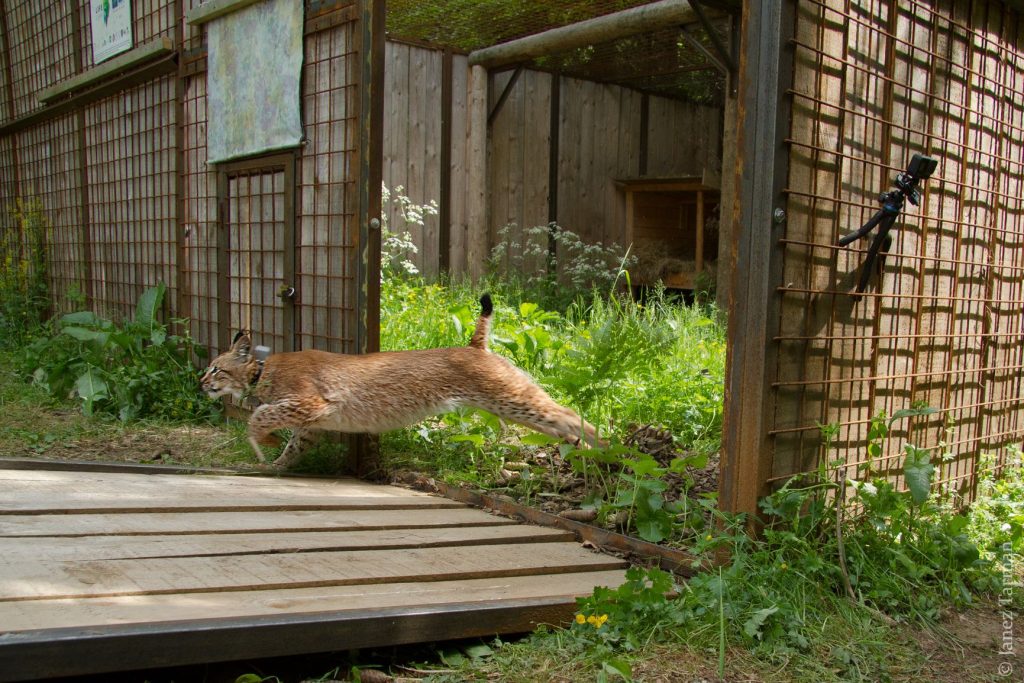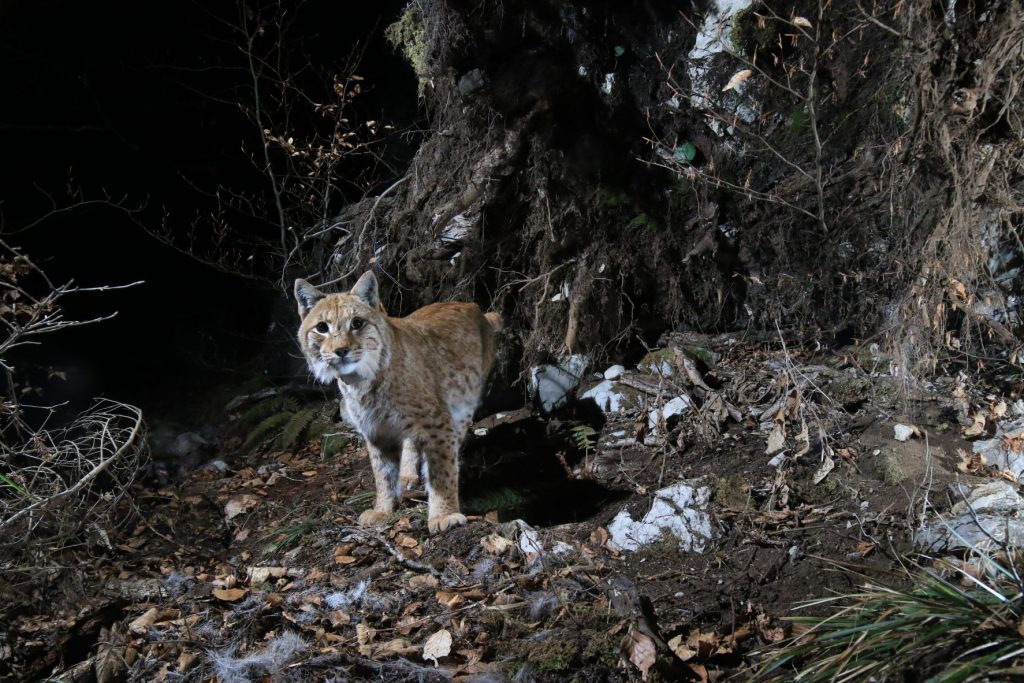In the scope of the LIFE Lynx project, we successfully translocated 18 Carpathian lynxes to Slovenia and Croatia, releasing 12 in the Dinaric Mountains and six in the Slovenian Alps. Our plan, guided by international best practices, focused on ensuring the survival and establishment of translocated animals.
Monitoring with GPS-telemetry collars allowed us to assess their integration in the population. In the Dinaric Mountains, 9 out of 12 lynx (75%) successfully integrated into existing population, while in the Alps, 5 out of 6 lynx (83%) integrated as a population stepping-stone. Additionally, four lynxes were translocated to the Italian Alps from the Carpathian and Swiss Jura populations under the ULyCA2 project, with one female establishing her territory in Slovenian Alps.

Release of lynx Boris, one of nine lynxes who successfully included into Dinaric part of the population. Photo: Janez Tarman
Our data show that 86% of translocated lynxes survived first six months after the translocation, surpassing the average of 66% reported in similar conservation projects. Over half (54%) have successfully reproduced with over 50 kittens detected, which is vital for preventing inbreeding. High survival of translocated animals may be due to being wild-caught, enhancing their hunting skills. Swift adaptation to new environments and kill rates similar to those of the remnant lynxes prevented starvation, which is otherwise a common issue after such translocations.

Goru is one of the most successful translocated lynxes. Photo: Jay Knight, Michael Willet and Lan Hočevar
In addition to tracking translocated lynxes with telemetry, we captured 11 remnant animals from the existing population and 10 offspring of translocated lynxes. This allowed us to monitor interactions between translocated and remnant animals, compare their ecological behaviors, affirming the successful integration of translocated lynxes into new ecosystems and their high performance. Individual monitoring thus confirms the success of translocation efforts in the scope of the LIFE Lynx project.
